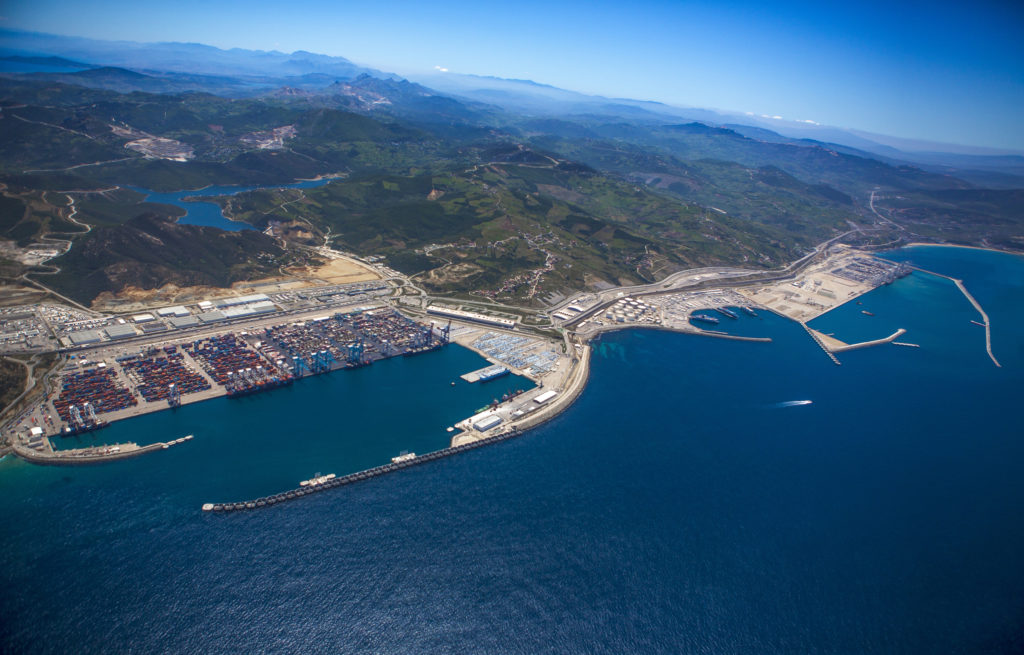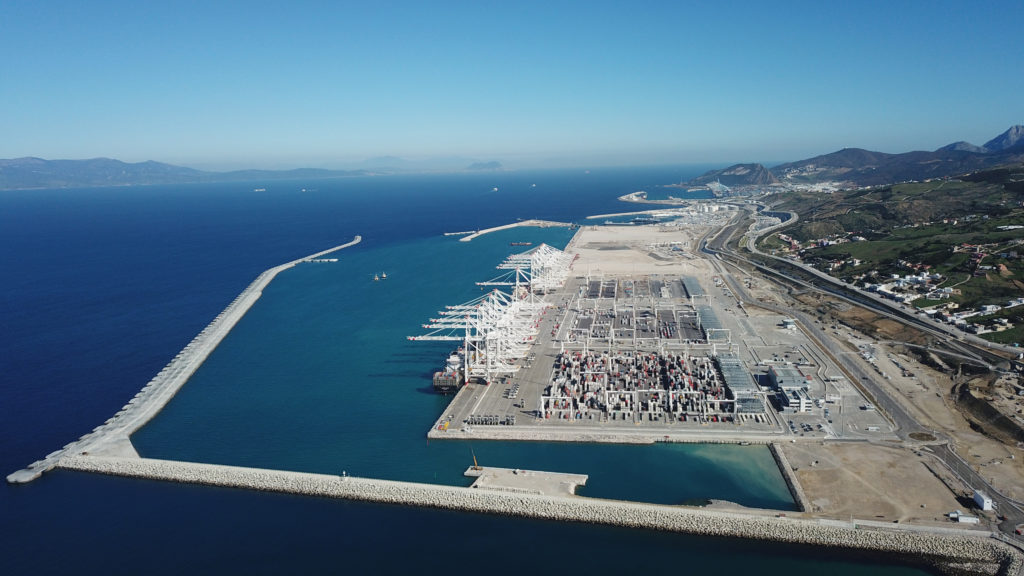Morocco launches largest-capacity port in the Mediterranean
At the mouth of the Mediterranean Sea lies the number-one-capacity port in Africa and the Mediterranean: Tanger Med Port in Morocco. Strategically situated on the Strait of Gibraltar, barely 14 km away from the coast of Spain, Tanger Med is the fruit of a unique and long-term vision established by Moroccan King Mohammed VI in 2003. “We consider Tanger Med as the core of a large port, logistics, industrial, commercial and touristic complex,” the King stated.
On June 28th, 2019, the third phase of development of the port, Tanger Med 2, was launched. Tanger Med 2 includes two new container terminals with a capacity of 6 million Twenty-foot Equivalent Unit (TEU) containers, which is twice the capacity of Tanger Med 1. “In only seven years, from 2007 to 2014, we saw the 3 million TEU container capacity at Tanger Med 1 being used to its limit,” said Rachid Houari, Director of Tanger Med Port 1 and 2. “We’re the closest point to Europe here in Tanger Med and so that means the ships don’t have to deviate very much from their route. That’s an extremely competitive advantage for a port in Africa.”

According to Mr. Houari, the importance of Morocco for the European Union (EU) as a trade hub and gateway to Africa is likely to increase with the opening of the Tanger Med 2. This will not only magnify the exchanges between the two continents but also develop the local economy and foster job creation, which could be instrumental in curbing irregular migration to Europe in the long run.
Connected to 186 ports in 77 countries, Tanger Med is not only a gateway bridging Europe and Africa but also a global logistics hub. Containers shipped from Tanger Med can reach the Middle East in 9 days, North and South America in 10 days, and Asia in 20 days. Every year an estimate of 1 million new vehicles are exported, plus the transit of 7 million passengers and 700,000 trucks via the Passenger and Roll-on/Roll-off (Ro-Ro) Port in Tanger Med.
Up to now, most of the container traffic has been trans-shipment traffic. “Ships with up to 2,200 containers are unloaded here at Tanger Med 1 and Tanger Med 2,” said Rajae Elayachi, responsible for container activity at Tanger Med Port Authority. “Huge ships like these cannot call in at most ports in Africa. The containers have to be transferred to smaller ships.” Tanger Med 1 is operated by APM Terminals and Eurogate whereas the recently inaugurated Tanger Med 2 will be operated by APM Terminals and Marsa Morocco.
To remain attractive as a trans-shipment facility, a port must offer efficient unloading and loading of containers. Tanger Med has made significant investments both in cutting-edge technology and in developing the skill set of their employees. “The movements a crane can do, on average, is about 29 or 30 per hour, with some port operators in China being able to offer up to 40 crane movements per hour,” said Mr. Houari. “At Tanger Med 2 the current number of movements is 32. We want to bring it up to 40 as well.”

The successful development of Tanger Med port has contributed to position Morocco in the international maritime scene, allowing the North African country to rise from the 83rd to the 17th rank worldwide, according to the United Nations Conference for Trade and Development (UNCTAD). The import-export activity conducted at Tanger Med represents an overall traffic valued at 317 billion dirhams (approximately 30 billion euros) in 2018.
Tanger Med Free Zone comprises an industrial hub for more than 900 companies representing a yearly export turnover of over 7,5 billion euros in sectors such as automotive, aeronautics, logistics, textile and trade. All this industrial activity has generated more than 75,000 jobs. “One of the reasons why we decided to open operations in Morocco was because we were able to develop and keep our skilled workers,” said Julianne M. Furman, General Manager Europe for EXCO Automotive Solutions. “We’ve seen many of them grow professionally with us. They want to stay here and evolve in their careers.” Via Tanger Med, EXCO ships products to 35 different customers in 115 destinations, most of which are located in Europe. More than 2,000 employees are currently working for EXCO at the Tanger industrial hub.

A company setting up operation in the Tanger Med Free Zone must export a minimum of 85% of its production. In exchange, they benefit from several customs advantages, such as having to do less paper work when receiving raw materials which would be used in the value-added processes before the final export of the product. “With over 900 companies in the industrial zone, you can imagine there is an important ecosystem therein,” said Mr. Houari. “In addition to that, there is no tax on profits for the first five years.”
In the years to come, Tanger Med will continue its dynamic evolution through a new investment program of 9 billion dirhams (850 million euros). The program aims to provide the logistics solutions needed to support the growth of Moroccan exports, particularly in the industrial and agricultural sectors, as well as the successful deployment of the industrial park Mohammed VI Tanger Tech City.



